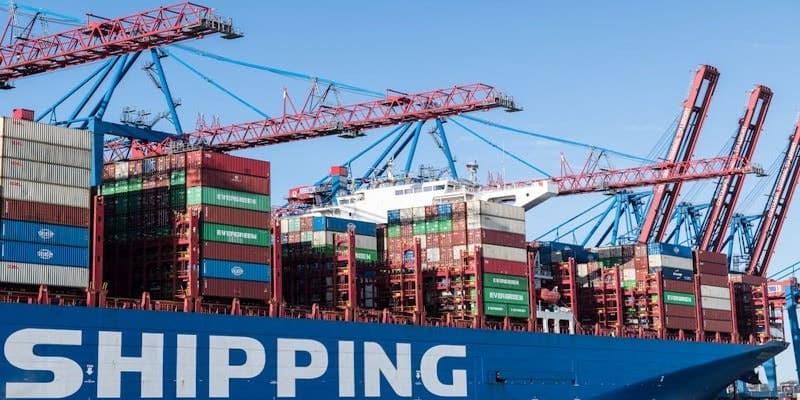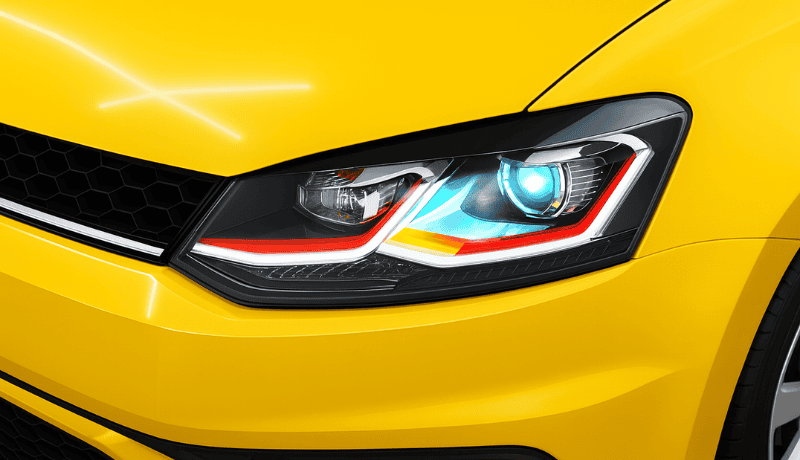Concerned about legal complications when importing LED headlights? Customs delays or destroys thousands of non-compliant shipments annually.
This guide clarifies the process, ensuring your imports meet regulations, avoid penalties, and arrive without delays. Learn the exact steps to import LED headlights legally and efficiently.
Why Are LED Headlight Imports Restricted?
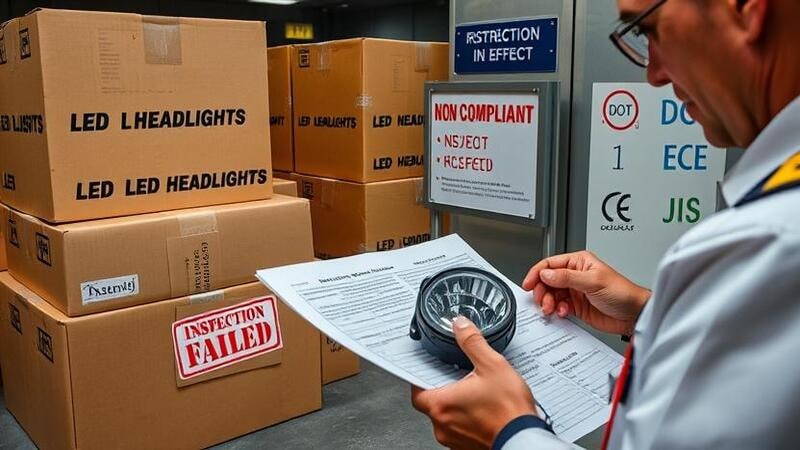
For safety and legal reasons, governments limit the sale of LED headlights. Non-compliant lights are dangerous on the road. Too much glare from some LED kits can blind cars coming the other way.
Others have beam designs that aren’t well thought out, leaving important places dark. When it’s dark or rainy, these flaws make accidents more likely.
To avoid these risks, countries establish and strictly adhere to technological standards. To ensure correct illumination and alignment, DOT certification is necessary in the United States. In terms of colour temperature and beam symmetry, Europe adheres to ECE standards.
- United States (DOT): Requires certification to ensure correct illumination and alignment.
- Europe (ECE): Adheres to ECE standards regarding color temperature and beam symmetry.
- Japan (JIS): Prioritizes both accuracy and longevity.
Both accuracy and longevity are prioritised by Japan’s JIS standards. Shipments that do not have these certificates may be confiscated or destroyed by customs authorities. Before shipment, make sure all specs are verified by the manufacturer or importer.
LED Headlight Regulations and Standards
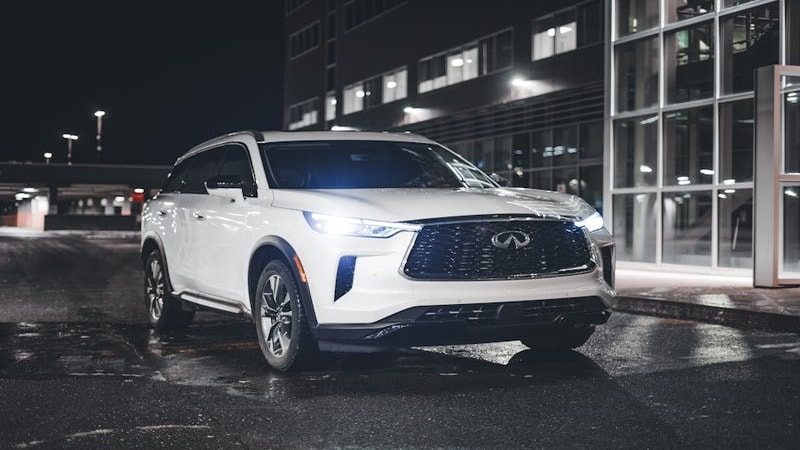
LED headlights have to follow strict rules about safety and how well they work. These rules keep glare from happening and make sure that the roads are well-lit. Lights that don’t work right can make driving dangerous.
Regulations are very different from one area to the next. When it comes to beam patterns and strength, the EU follows ECE rules. In the US, brightness and orientation must be certified by the DOT.
Importers need to know these rules very well. Fines and shipping refusal can be avoided by following the rules. Before you buy or send lights, you should always check the certifications.
Automotive Lighting Regulations by Country in 2025
United States (DOT Certification & FMVSS 108 Compliance)
The U.S. requires all headlights to meet DOT standards. These rules ensure brightness and beam patterns are safe for roads. Non-compliant lights can get your shipment stopped at customs.
Importing lights without DOT marks may lead to fines or rejected shipments. Retailers selling uncertified lights face legal penalties. Always verify DOT certification before ordering.
FMVSS 108 sets strict performance rules. This standard covers glare, visibility, and durability. Lights must have the correct beam pattern and proper markings. Without FMVSS 108 compliance, your products can’t be sold legally.

European Union (ECE Standards & Road Safety Compliance)
ECE certification is mandatory for all vehicles. Headlights must pass ECE R112 or R148 standards to be road-legal. These tests ensure lights meet Europe’s safety and visibility rules. Non-compliant products can be blocked at customs.
ECE regulations require a sharp cutoff to prevent blinding other drivers. Lights must also adjust brightness for different road conditions. Failing these tests means the product cannot be sold in the EU.
High-performance LED headlights often need automatic levelling to reduce glare. Some models also require built-in cleaning systems. Missing these features can make your lights illegal for road use.
China (GB Standards & Import Restrictions)
Headlights must meet GB 25991-2010 standards to be road-legal in China. These tests verify beam patterns, brightness, and durability requirements. Non-compliant products face immediate rejection at customs.
Chinese regulations specifically ban ultra-high-lumen aftermarket conversions. Only factory-installed or properly certified retrofit kits are permitted. Violators risk heavy fines and product confiscation.
Legally compliant headlights must display the GB mandatory certification mark. Importers should verify that this mark appears permanently on both the product and packaging. Counterfeit markings are becoming a growing enforcement focus.
Australia & Canada (ADR & CMVSS Standards)
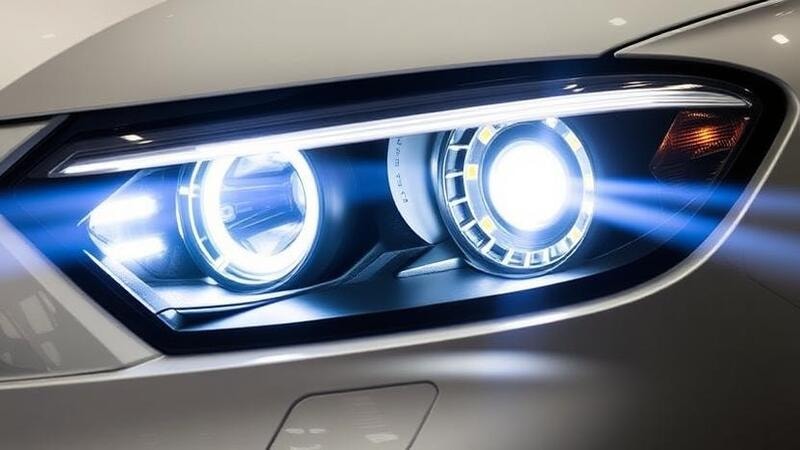
Australia enforces strict ADR 13/00 and 46/00 rules. The ADR (Australian Design Rules) certification mark must be visible on compliant products. Non-approved lights fail vehicle inspections and cannot be registered.
Canada accepts both DOT and ECE standards with modifications.LED headlights must meet CMVSS 108 requirements, similar to U.S. DOT rules. However, Canada also allows certain ECE-certified lights if modified for local conditions. Importers must verify which standard applies to their products.
Both countries actively block non-compliant imports. Customs officials in Australia and Canada routinely check lighting shipments through the quality management system. Uncertified products face immediate seizure and possible fines. Retailers must provide proof of compliance before selling automotive lighting.
Energy Efficiency and Environmental Concerns
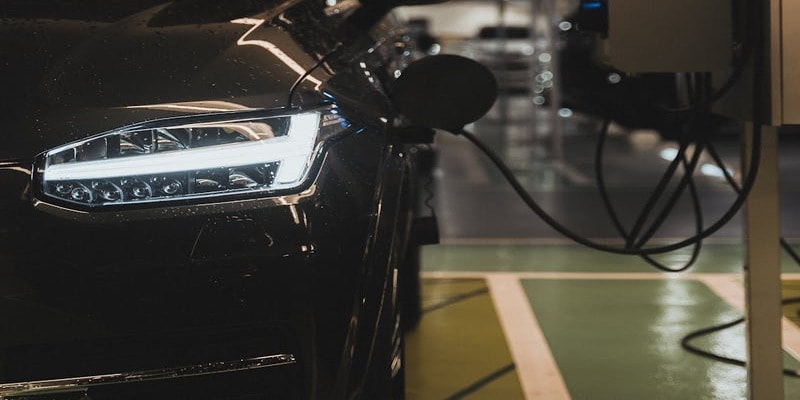
New global rules target lower power consumption while maintaining brightness. Efficient designs save fuel in gas vehicles and extend range for electric cars. Manufacturers must balance light output with strict energy consumption limits.
Europe’s EcoDesign rules set strict wattage limits for aftermarket LEDs. China’s GB standards penalize lights drawing excess power. The U.S. currently has looser requirements, but this may change.
Non-compliant lights face rejection in eco-conscious markets like the EU. Top buyers now prioritize energy ratings when choosing suppliers. Future-proof designs should meet both current and upcoming standards.
Customs Restrictions on LED Headlight Imports
No certification means automatic rejection at borders. Shipments without proper marks (DOT/ECE/GB) get stopped immediately. Customs agents now scan for fake or missing certifications first. One bad container can trigger extra checks on future orders.
Even certified lights get tested at random in key markets. The EU and Australia do on-site photometric checks. Failed tests mean destroyed shipments plus blacklisting risks.
Missing test reports or wrong labels delay shipments 2-4 weeks. Some ports fine $500+ per incorrect customs declaration. Smart importers attach compliance docs outside packages for faster clearance.
Banned LED Headlights & Restricted Regions

Overly powerful headlights (above 6,000 lumens) are illegal in Germany and Japan. These create a dangerous glare for oncoming traffic. Even compliant lights can be banned if improperly installed or adjusted.
U.S. and Canada aggressively seize non-DOT lights at ports. Germany performs roadside checks with light-measuring gear. Japan requires mandatory JIS certification with zero tolerance for fakes.
First offenses often bring $10,000+ fines per shipment. Repeat violators face product recalls and import bans. Amazon/Walmart delists sellers with multiple compliance violations.
How to Ensure Your LED Headlights Are Compliant for Export
Selling LED headlights globally means navigating a maze of regional regulations. One certification mistake can lead to seized shipments or costly fines. Follow these key steps to protect your business and keep exports flowing smoothly.
Understanding Global Headlight Certification Requirements

Navigating international headlight legal regulations in 2025 is critical for successful exports. Each market has unique certification standards that must be met. Missing these requirements can lead to rejected shipments, fines, or even legal action.
Key Certifications by Market:
- DOT (USA): Mandatory for all vehicles, ensures brightness and beam pattern compliance
- ECE (Europe): Requires strict anti-glare testing and ECE marking
- GB (China): Must pass local lab testing for brightness and durability
- ADR (Australia): Follows unique beam pattern and alignment rules
- JIS (Japan): Prohibits ultra-bright LEDs above set lumen limits
Key Features of Compliant LED Headlights
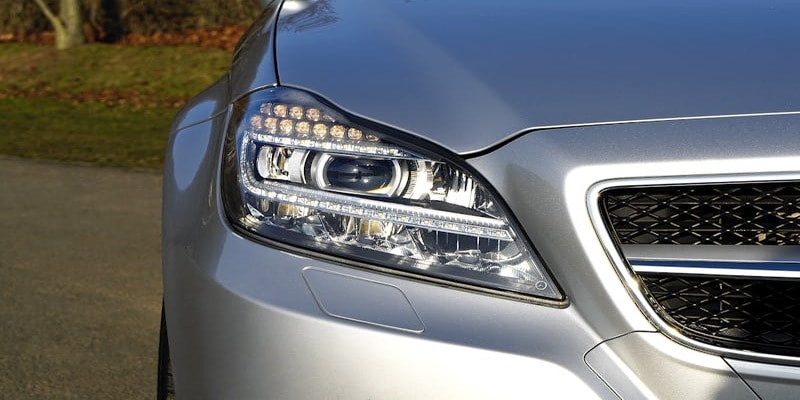
Precision Beam Patterns
Must produce clean cut-off lines (ECE) or wide illumination (DOT) without glare. Road-legal optics prevent blinding other drivers while maintaining visibility.
Smart Brightness Control
Auto-dimming or manual adjustment prevents excessive lumen output. Some markets require automatic leveling systems for high-powered LEDs. They are also known as smart lights.
Weatherproof Reliability
IP 67 or higher waterproof rating is standard for global approvals. Housing must withstand extreme temperatures (-40°C to 85°C) without failure.
Tamper-Proof Certification Marks
Legitimate DOT/ECE/GB stamps are permanently molded (not stickered). Counterfeit markings trigger immediate customs rejection in strict markets.
EMI/RFI Shielding
Prevents electrical interference with vehicle systems, required for EU/US/Japan approvals.
Steps to Certify Your LED Headlights for Different Markets

- Research Target Markets
- Identify specific standards (e.g., DOT for the U.S., ECE for the EU, GB for China).
- Check for updates; regulations change frequently (e.g., the U.S. now allows adaptive headlights).
- Pre-Test Prototypes
- Work with accredited labs to test beam patterns, brightness, and durability before mass production.
- Fix failures early; redesigning molds later costs 10x more.
- Submit Certification Applications
- DOT requires manufacturer self-certification (but random audits happen).
- ECE needs official lab reports and factory inspections.
- Label Correctly
- Engrave certification marks (no stickers) per regional rules.
- Include compliance documents inside and outside the packaging.
- Prepare for Customs
- Attach test reports to shipments, and some ports demand digital copies in advance.
- Train suppliers to pack documentation visibly (reduces clearance delays).
- Monitor Regulation Changes
- Subscribe to updates (e.g., EU’s 2025 EcoDesign rules may affect wattage limits).
- Re-test products every 2 years, as standards evolve.
Risks and Challenges of Non-Compliance
Ignoring LED headlight regulations doesn’t just risk fines; it can destroy your business. From seized shipments to legal bans, here’s what happens when compliance fails:
Fines and penalties for non-compliance with regulations
Getting caught with non-compliant LED headlights hits hard. U.S. DOT fines start at $10,000 per violation, per shipment. EU customs destroys illegal lights on sight, no appeals. Also, research your local laws to ensure their usage on the roads.
Reputation damage cuts deeper. Amazon/Walmart delists sellers after two violations. Bulk buyers blacklist manufacturers for 3+ years. One failed audit can wipe out 80% of orders.
Compliance isn’t optional. Test every batch. Document everything. Train your team. The rules won’t bend, but your business will break if you ignore them.

Glare and safety concerns with non-compliant LED headlights
Bad LEDs kill visibility. Overly bright or misaligned beams create deadly glare, blinding oncoming drivers for 2+ seconds (enough to cause head-on collisions).
Roadside checks don’t wait. In Germany, police use handheld photometers to ticket illegal lights instantly. Japan mandates recalls for any glare-related complaints.
Compliant beams reduce accident risks by 31% (NHTSA data). Market leaders now require ISO-certified lab reports with every order.
Vehicle inspections and registration issues
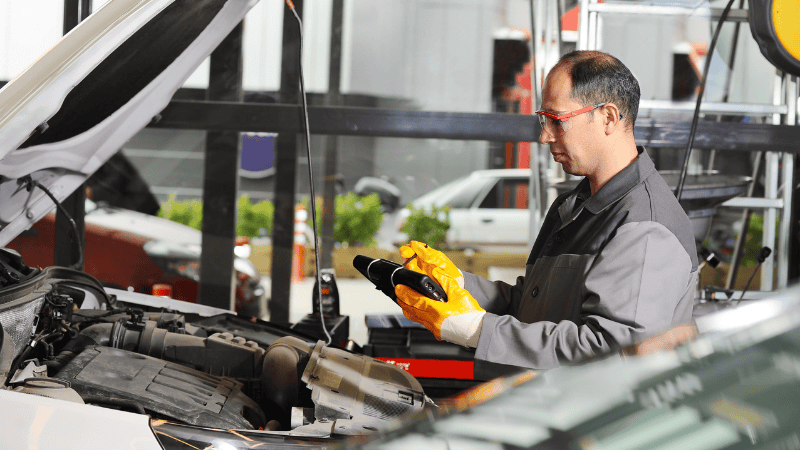
Non-compliant LED headlights instantly fail safety inspections in most countries. Mechanics and testing centers now use certification scanners to verify headlight legality.
Failed inspections trigger costly delays, replacement lights, retest fees, and lost delivery time. In some EU states, illegal lights void your vehicle’s entire roadworthiness certificate.
Registration blocks hurt resale value. Cars with non-compliant lighting get flagged in national databases. Buyers walk away or demand steep discounts.
Choosing the Right LED Headlights

Certified LED factory headlights guarantee compliance. The lights that have ECE or DOT markings must pass customs and inspections. Lab reports and technical documentation are necessary for certified products. These certificates eliminate the risk of fines, seizures, or rejected vehicle registrations.
These incandescent lamps are engineered for safety to ensure reliable performance in various conditions. The precision-tested beam patterns are designed to prevent dangerous glare, providing clear visibility without straining the eyes.
It offers an optimal brightness balance, bright enough to see clearly but not so intense that it causes blinding.
Make sure your products are safe and don’t break any rules. This will keep your business safe and help you stay competitive in big markets like the US, EU, and Canada. Give buyers and distributors confidence in your products by always supplying tested, high-quality items.
Always look for real certification marks, not just stickers, to make sure they are real. Also, make sure the paperwork matches test reports from reputable labs. Ask suppliers for a clear audit trail to show their products are real.
Consider OEM vs aftermarket LED headlights
| Feature | OEM LED Headlights | Aftermarket LED Headlights |
|---|---|---|
| Compliance | Factory-certified (DOT/ECE/GB), no modifications needed | Must be checked—only reputable brands are certified |
| Fit & Performance | Perfect match for the vehicle, optimized beam pattern | May vary, some fit well, others need adjustments |
| Price | 2-3x more expensive than aftermarket | 30-50% cheaper than OEM (budget-friendly) |
| Customization | No options, original design only | Multiple colors, designs, and brightness levels |
| Safety Risk | Low risk, meets all regulations | High risk if uncertified (fines, failed inspections) |
| Best For | Safety, resale value, and commercial fleets | Budget buyers who want style (must buy certified) |
Tips for choosing the right car lights and accessories
Here are some key tips for choosing the right car lights and accessories:
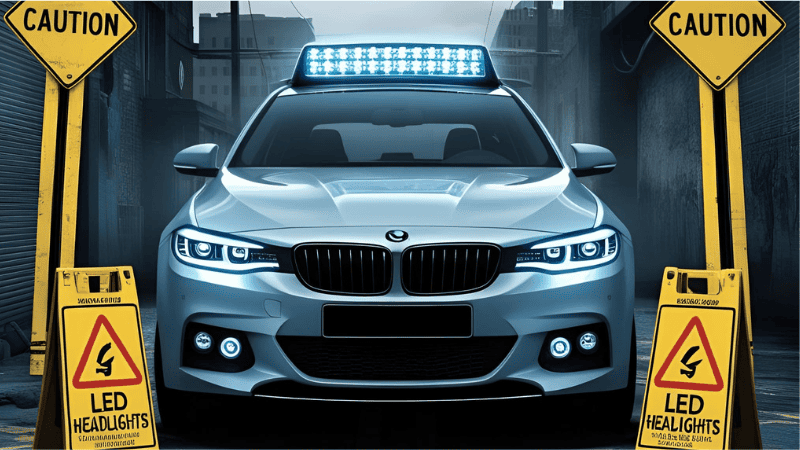
- Check for Certifications: Always look for ECE, DOT, or GB marks to ensure the lights meet legal safety standards. Avoid uncertified products that could lead to fines or failed inspections.
- Prioritize Energy Efficiency: LED lights consume less power and last longer than halogen bulbs, saving you money over time. In other words, they must be energy efficient.
- Ensure Proper Fit: Buy lights designed specifically for your car model to avoid installation issues and poor beam alignment.
- Avoid Extreme Cheap Options: Low-cost, unbranded lights may lack proper certifications and fail prematurely. Invest in reputable brands for reliability.
- Consider Weather Resistance: If you drive in harsh conditions, choose waterproof and dustproof lights for durability.
- Balance Brightness & Safety: Extremely bright lights can blind other drivers. Opt for DOT/ECE-approved LEDs with proper beam patterns.
- Review Warranty & Support: Reliable manufacturers offer warranties, ensuring help if issues arise.
Conclusion:
LED headlamp import regulations are complex, but manageable. Avoid costly delays and keep your business going by purchasing certified items, maintaining current knowledge on compliance regulations, and dealing with reputable suppliers. Shine brighter with completely compliant, high-performance LED headlights.
From Factory to Your Warehouse — Make Headlight Imports Hassle-Free
Ready to stock customs-cleared LED headlights? Avoid seizures, penalties, and headaches with CarLightVision’s fully certified DOT, ECE, and GB vehicle illumination. Our staff eases factory-to-warehouse imports of light bulbs with bulk orders and compliance help.
Visit our certified products or speak with our lighting specialists to transform restrictions into your competitive edge.
FAQs
Q1: Is there any headlight or taillight color restriction on Import?
In most countries, front headlights must be either white or yellow. Most states require that rear lights be exclusively red or amber. Tail lights and LED brake lights may be red. Blue lights are typically banned to avoid confusion with emergency vehicles.
Q2: What will be the new lumens per watt requirement?
In July 2028, new requirements will increase the lumens per watt for general service fluorescent lamps from 45 to 120.
Note: While this applies to fluorescent lamps, the trend toward higher efficiency (lumens per watt) is relevant to LED headlights as well, particularly under EU EcoDesign rules.
Q3: What happens if my certified shipment is randomly tested and fails?
Even certified products can be randomly tested by customs (especially in the EU and Australia). If a tested sample fails the photometric test, the entire shipment can be seized and destroyed, and the importer may face blacklisting risks. Always ensure quality control is strictly maintained batch-to-batch.
From Factory to Your Warehouse — Make Headlight Imports Hassle-Free Ready to stock customs-cleared LED headlights? Avoid seizures, penalties, and headaches with CarLightVision’s fully certified DOT, ECE, and GB vehicle illumination. Our team eases factory-to-warehouse imports of light bulbs with bulk orders and compliance help. Visit our certified products or speak with our lighting specialists to transform restrictions into your competitive edge.
